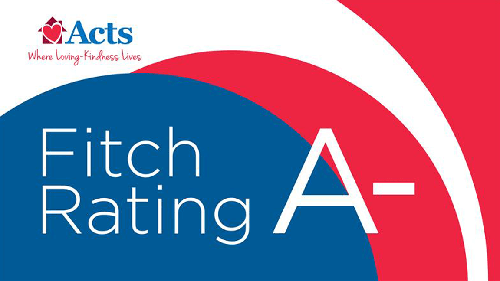Are Retirement Communities Expensive?
 There’s a lot to keep in mind when it comes to later-stage retirement, but perhaps the one thing that resonates most is cost. Being able to afford the retirement lifestyle you want is of course a priority. You're hopefully busy enjoying the things you were never able to do while employed, but these things cost money – and you’ll need the resources to enjoy them.
There’s a lot to keep in mind when it comes to later-stage retirement, but perhaps the one thing that resonates most is cost. Being able to afford the retirement lifestyle you want is of course a priority. You're hopefully busy enjoying the things you were never able to do while employed, but these things cost money – and you’ll need the resources to enjoy them.
This leads to older adults spending lots of time and energy on finding ways to reduce their costs while stretching their retirement savings. Thankfully, there are plenty of options for those who want to enjoy their retirement to the fullest. One of the more increasingly popular of these options is moving to a retirement community.
However, there are those who feel the costs of doing so are limiting, as there’s a perception that living in a retirement community is expensive. So, what’s the truth? Are retirement communities expensive, or are they a good way to maximize your retirement income?

Why “Expensive” is Relative
Many retirees balk at the idea of moving to a retirement home. They already have their own home; one they’ve bought and paid off over long years – why give up that existing home? It’s often even harder to justify that decision when it’s the same place you raised your family and built fond memories. But living in your current home, a process called “aging in place,” isn’t nearly as cost-effective as you might think.
It’s true that you’re likely finished paying off your mortgage by the time you retire. Yet there are more costs associated with owning a home than simply paying a monthly mortgage. You’ll still need to pay taxes on that property, as well as your electricity, heating, water, and other utility bills. Trash removal, landscaping, and general maintenance and repair are all costs you’ve got to contend with, as well. And these costs continually increase.
Finally, it’s time to address the elephant in the room: as we age, we have different physical abilities than our younger selves. A large, multi-story house isn’t always the safest place for someone in retirement who might currently or soon have trouble walking up and down steps. Hurting yourself is a risk you don’t want to take, especially if you want to enjoy a full and active retirement.
How Retirement Communities Are More Affordable
It’s true that aging in place can be a drain on your retirement savings, but how does moving to a retirement community compare? Quite well actually. While a retirement community may seem expensive up front, they are designed to offer their residents ways to streamline their costs and needs. This means that financial or even physical limitations that you might encounter by aging in place are largely absent if you do choose to move to a retirement community. A typical retirement community residence, for example, is built to make it easy to move around by making accessibility options standard if you need them.
Affordability, when compared to what you’d be paying to live in your existing property, often comes out ahead. Instead of having to manage half a dozen or more monthly bills, you’ll only be responsible for paying a single monthly maintenance fee that covers nearly all those same associated costs, plus a number of amenities you’d often pay separately for, such as a fitness center, pool access, entertainment, dining, hobbies, and other activities. No longer will you have to keep track of managing all these different aspects of home ownership individually.
Additionally, those monthly fees offer additional perks. The amenities those fees pay for offer dozens of ways to experience the benefits of retirement, from craft workshops, art studios, fitness centers, swimming pools, clubhouses, and more. This sort of no-strings-attached living means you won’t have to pay out of pocket for any of these amenities like you would if you were still living in your old family home. For example, an active retiree who likes to go to the gym doesn’t have to worry about the added costs of a gym membership when access to one is included! And did we mention many offer fitness trainers?
How a Type A Retirement Community Can Protect Your Nest Egg

A certain type of retirement community, referred to as a continuing care retirement community (CCRC), can help you protect those assets you’ve spent your entire working life to save. CCRCs which offer what’s known as “Type A life care” offer an entrance fee which, in part, helps pay for future healthcare needs such as assisted living and skilled nursing care in today’s dollars, instead of allowing inflation to control the price.
Those who choose a Type A contract with a continuing care retirement community have the peace of mind of knowing their monthly costs will not increase due to the need for a higher level of care. This helps keep monthly costs consisted, allowing you to more easily budget for the expected, rather than the unexpected.
Other Ways Retirement Communities Help You Save
Regardless of how expensive communities typically are, managing your retirement income is something that most older adults feel is important. Thankfully, moving to a retirement community can also help you save, resulting in even more ways to stretch your budget further in ways beyond keeping your monthly maintenance costs low. The “secret,” such as it is, is rather straightforward: the existing property you move out of when you relocate is a major source of retirement income.
The equity you’ve built up in your property over time is likely going to be rather impressive. However, you can’t access that equity if you’re living there – but you can if you sell that home. The proceeds from such a sale are a fantastic way to bolster your retirement savings, even after you take the costs of moving to a retirement community into account. The rest can go right back to work for you, providing you with the resources you need to live your best life in ways that you otherwise might not be able to afford.
The Costs of Retirement Communities
When considering how expensive retirement communities are, it’s important to remember that these communities are custom designed to provide retirees with exactly what they need out of life in a way that’s simple and straightforward. Not having to worry about what it’s costing you to own and maintain a large family home is a major source of relief.
The combination of the affordability of living in a retirement community when compared to aging in place and the convenience of having world-class amenities included in your monthly fees that you would have to pay out-of-pocket for otherwise makes a retirement community an attractive option for anyone who wants to ensure they will have the resources they need to enjoy their retirement to the fullest.
To explore some top-notch retirement communities and if living there would be more affordable than you realize, consider the 28 communities offered by Acts Retirement-Life Communities.





